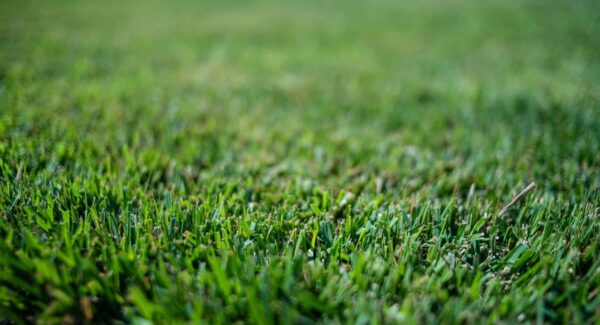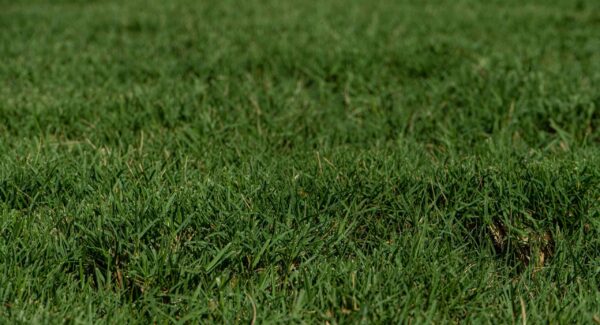The Benefits of Worm Castings in Your Lawn: Nature’s Best Fertilizer
There are numerous reasons to consider using worm castings in your lawn care routine. They supply all the essential nutrients while enhancing the soil, fostering a healthier, more vibrant lawn.
Worm castings are organic fertilizers produced by earthworms and are widely regarded as the richest natural fertilizer available.
Worm castings are an excellent choice to enhance your lawn in a natural and nourishing way. This article will explore worm castings and how they contribute to a healthy lawn, providing insights into how they can enhance lawn care efforts.
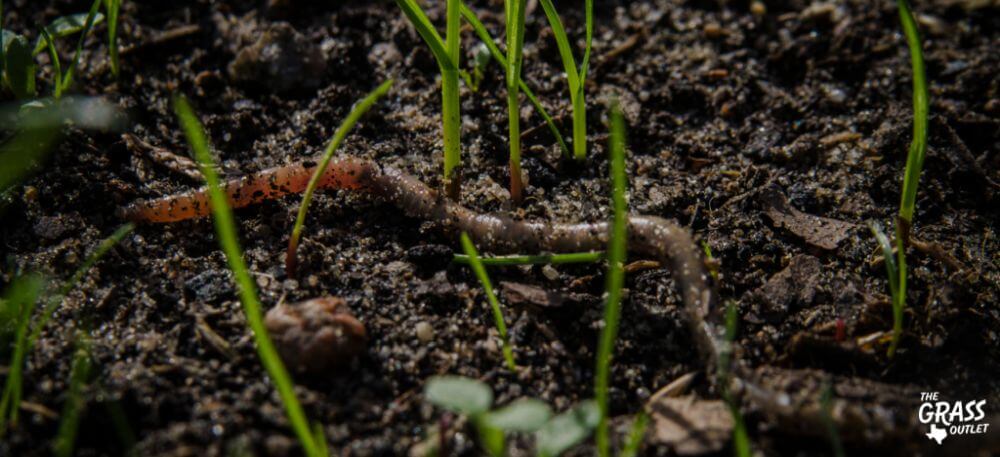
What Are Worm Castings?
Worm castings are a type of organic fertilizer produced by earthworms. As earthworms consume compost, their excrement becomes an excellent soil enhancer. Unlike animal manure or chemical fertilizers, plants easily and immediately absorb worm castings. Beyond promoting plant growth, worm castings improve the soil’s water retention due to their texture and help prevent root diseases.
The technical name for worm castings is vermicompost. “Vermi” refers to worms, while “compost” denotes breaking down organic matter.
What makes it so beneficial is a rich mix of active biological components, including bacteria, enzymes, fragments of plant matter and animal waste, and earthworm cocoons when moist. It contains water-soluble plant nutrients and over 50% more humus than typical topsoil.
A thin oil layer coats the castings as organic matter passes through the earthworm’s digestive system. This layer erodes over approximately two months, releasing nutrients slowly and providing lasting benefits despite their immediate availability. The cocoons in worm castings contain between two and ten eggs that hatch within two weeks. If the soil is loose, moist, and rich in organic material, these young earthworms continue decomposition, enhancing the soil’s health even further.
Essential Nutrients Found in Worm Castings
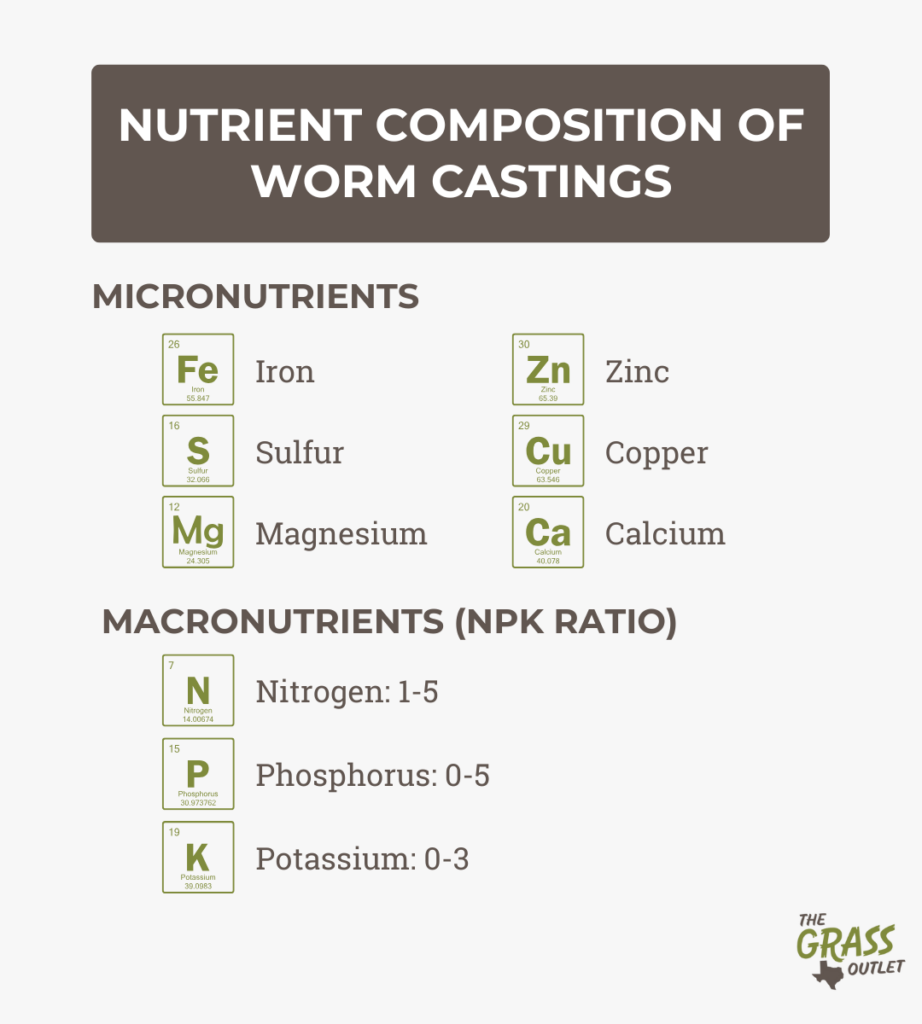 Worm castings contain micronutrients like iron, sulfur, magnesium, zinc, copper, and calcium. More importantly, they also contain essential macronutrients, with a nitrogen, phosphorus, and potassium (NPK) ratio ranging from 1-0-0 to 5-5-3, which varies depending on what the worms ate and how the material was stored.
Worm castings contain micronutrients like iron, sulfur, magnesium, zinc, copper, and calcium. More importantly, they also contain essential macronutrients, with a nitrogen, phosphorus, and potassium (NPK) ratio ranging from 1-0-0 to 5-5-3, which varies depending on what the worms ate and how the material was stored.
The best part is that these minerals are immediately available to plants without any risk of burning them, unlike animal manure or chemical fertilizers that need to be broken down in the soil before absorption.
Why Do Plants Need Macronutrients in Larger Amounts?
Nitrogen (N) is vital as it is a crucial part of chlorophyll, which plants need for photosynthesis. Without enough nitrogen, plants will have stunted growth and yellow leaves. Worm castings provide:
- A steady release of nitrogen.
- Offering up to 4% to 5% more nitrogen than typical garden soil.
- Ensuring plants get a consistent supply.
Phosphorus (P) is essential for root growth and flowering and plays a significant role in energy transfer within the plant. Healthy phosphorus levels in worm castings promote strong root formation and help plants better handle stress.
Potassium (K) enhances overall plant health and disease resistance. It aids protein and starch formation, improves photosynthesis, and boosts water uptake. The potassium in worm castings ensures plants are strong and more resistant to diseases and pests.
How Worm Castings Benefit Your Lawn
Using worm castings for lawn care comes with numerous benefits:
Improved Soil Structure:
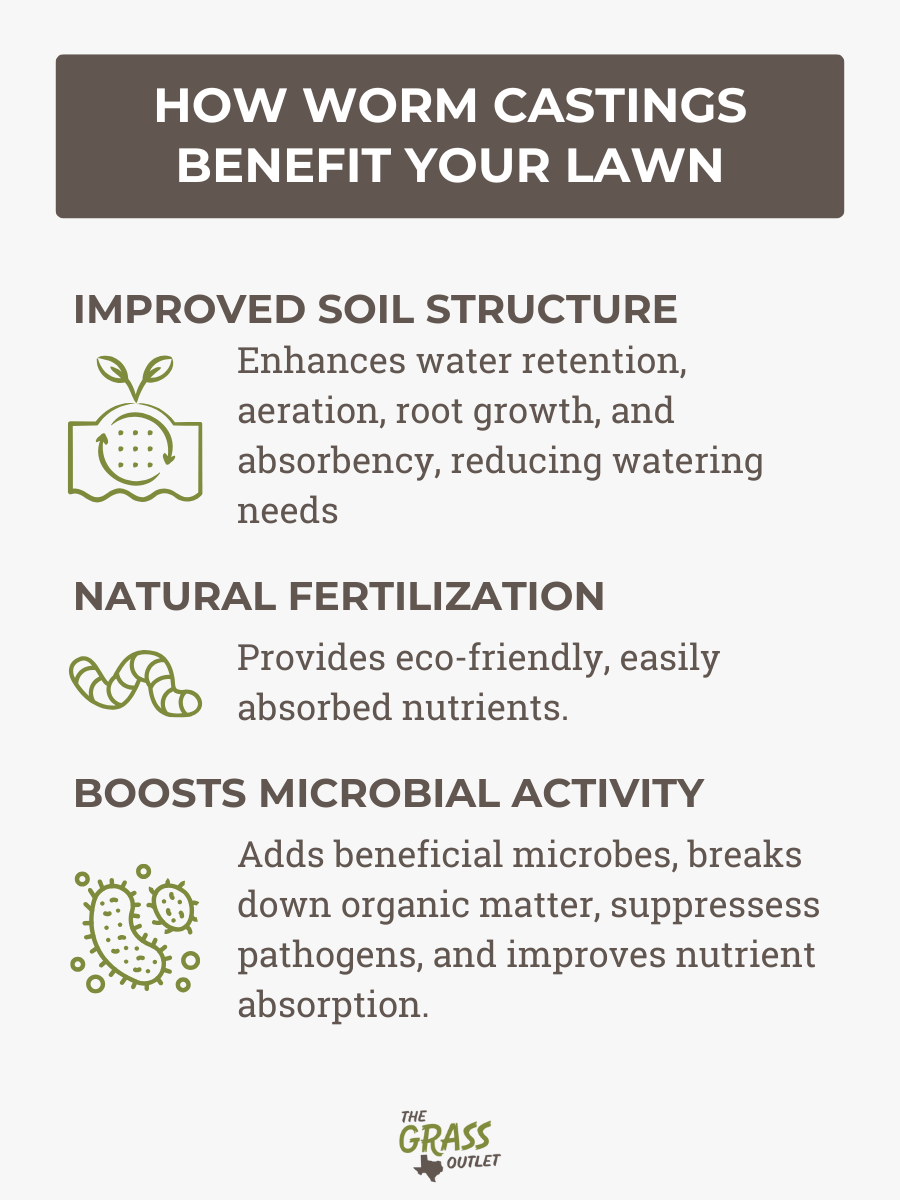 Worm castings boost soil structure by adding organic matter, which enhances water retention and aeration, creating an ideal environment for root growth. This helps keep the soil nutrient-rich and well-drained, essential for healthy plant development. Worm castings also increase soil absorbency, making moisture more consistently available to plants and reducing the need for frequent watering your lawn by keeping soil from drying out completely.
Worm castings boost soil structure by adding organic matter, which enhances water retention and aeration, creating an ideal environment for root growth. This helps keep the soil nutrient-rich and well-drained, essential for healthy plant development. Worm castings also increase soil absorbency, making moisture more consistently available to plants and reducing the need for frequent watering your lawn by keeping soil from drying out completely.
Natural Fertilization:
Worm castings’ nutrients are easily absorbed by plants, allowing your grass to take them in more quickly and efficiently than synthetic fertilizers. Additionally, worm castings are safe to use in large amounts, unlike synthetic fertilizers, which may cause nutrient burn or imbalances. They provide an eco-friendly alternative to chemical fertilizers, minimizing the adverse environmental effects of artificial options.
Boosts Microbial Activity:
Worm castings introduce countless beneficial microbes, bacteria, and fungi, ensuring optimal soil health. These microorganisms help break down organic matter into forms plants can easily absorb and assist in suppressing plant pathogens. Worm castings also contain humic acid, which further enhances plant nutrient absorption.
Worm Castings and Lawn Health
Worm castings offer numerous benefits to lawn health, from improving disease resistance to enhancing root growth. Let’s explore how they can contribute to a lush, thriving lawn.
Disease Resistance:
Composting worms feed on fungi, extract toxins, and consume aerobic bacteria, many of which could harm plants. These potentially toxic elements don’t survive the low-oxygen conditions inside a worm’s gut. Moreover, worm castings do not generate heat like other composts, which allows disease-suppressing microorganisms to thrive and outcompete harmful pathogens.
Enhanced Root Growth:
As mentioned, having earthworms in your lawn significantly boosts nutrient availability. Worm castings release micronutrients into the grass, readily absorbed by the roots, leading to faster, stronger, and healthier growth. These castings also help prevent root and crown rot and wilt disease. They also help plants withstand heat, drought, and other environmental stress. Since worm castings release nutrients slowly, it’s almost impossible to overuse them, making them an ideal solution for novice gardeners.
Thatch Breakdown:
Worm castings support the natural breakdown of thatch, preventing its buildup and encouraging a healthier lawn. They consume soil, thatch, and other organic material on the surface, then process and excrete nutrient-rich worm castings. This often happens in the soil, but during cool, wet nights, earthworms come to the surface, leaving small mounds on the lawn as evidence of their activity. Beneath the lawn, worm movement creates spaces for air, water, and nutrients to circulate—critical factors in maintaining healthy grass.
How to Apply Worm Castings to Your Lawn
Incorporating worm castings into your gardening routine is both easy and highly beneficial. Here are a few practical ways to use them:
Top Dressing:
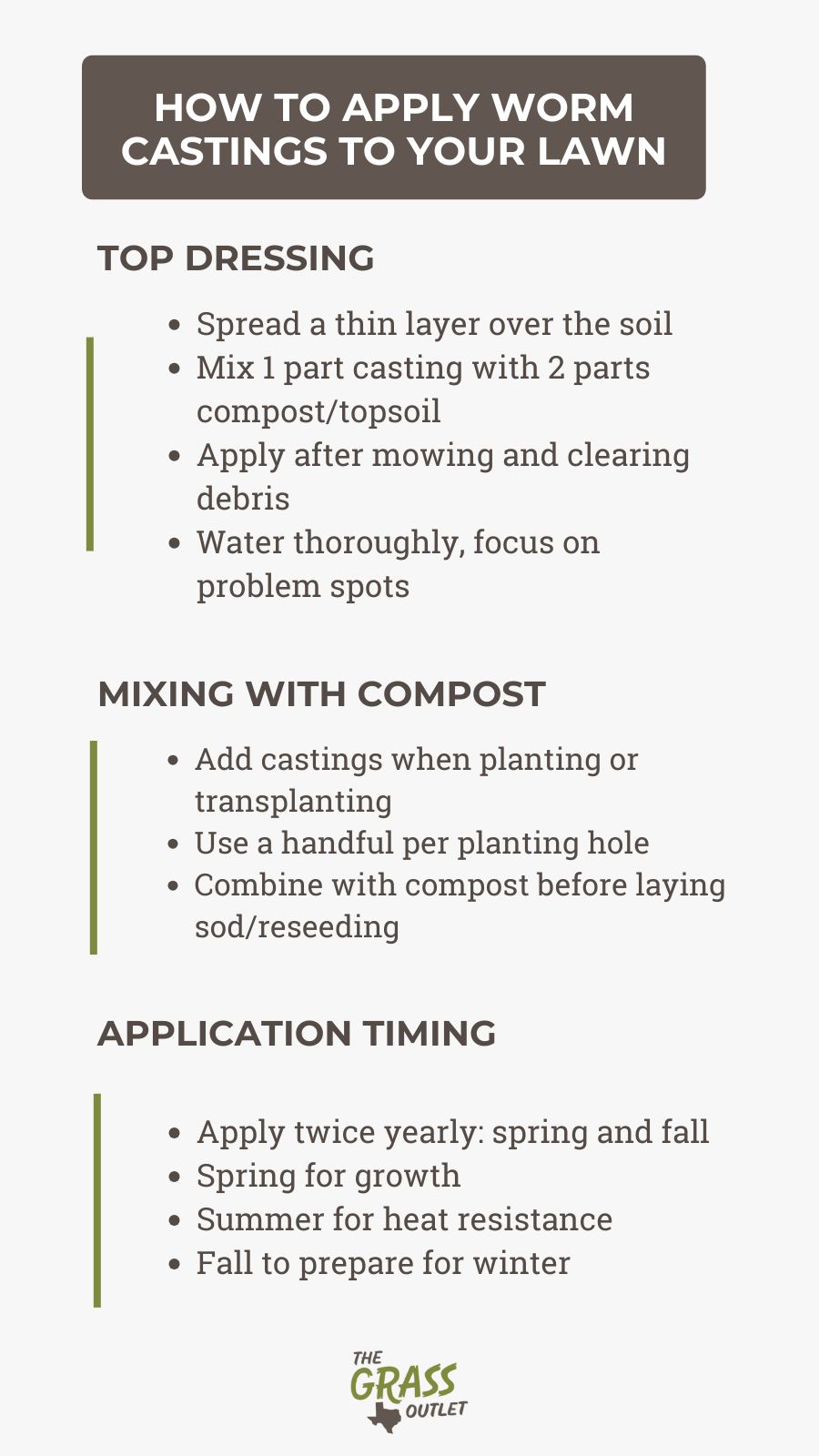
Lightly spread a layer of worm castings over the soil around your plants. This gradually provides nutrients as the castings blend into the soil and absorb water. For lawns, start by mowing and clearing any debris. Mix one part worm castings with two parts compost or topsoil and spread the mixture evenly across the lawn at about 1/4-inch depth. Water well to help the mix integrate into the soil. Pay special attention to problem areas, such as bare spots or patches with poor growth.
Mixing with Compost:
Mix worm castings directly into the soil when planting or transplanting seedlings. Adding a handful of castings to each planting hole provides an immediate nutrient boost. You can also combine worm castings with compost or soil before laying sod or reseeding, helping to establish your lawn quickly and promoting strong growth.
Application Timing:
Apply worm castings twice yearly, in spring and fall, for best results. Applying them in early spring supports grass growth after winter dormancy. Applying them in mid-summer can help strengthen your lawn and improve its resilience to heat, while using them in fall prepares your lawn for the colder months, ensuring a healthy start in spring.
Dealing with Earthworm Castings in Your Lawn
Earthworm castings are not harmful to your lawn; they are incredibly beneficial, providing essential nutrients that promote healthy growth.
However, the small mounds left behind by earthworms can create an uneven surface, making it necessary to level an uneven lawn for a more aesthetically pleasing look and easier mowing.
To manage these castings, use a lawn rake to clear the soil piles when they’re dry, as raking them while wet isn’t practical. Once collected, add the castings to your compost bin or garden soil. Alternatively, use a stiff broom to gently break down and spread the mounds evenly across your lawn. This helps the nutrients absorb better while keeping your lawn smooth, allowing the nutrients to be absorbed effectively without the inconvenience of bumps.
Rather than removing the castings entirely, leaving them ensures your lawn gets a natural and continuous nutrient supply, improving soil structure, boosting microbial activity, and contributing to a thicker, greener lawn.
Conclusion
If you are still wondering if the worm castings benefit grass, the answer is – absolutely! They are excellent for your lawn and an effective pest repellent. Safe to use, worm castings pose no risk even if applied in larger quantities.
Worm castings into your lawn care strategy offer long-term, sustainable benefits for a greener, healthier lawn. These natural fertilizers enrich the soil, support plant growth, and even deter pests while being safe for your garden.
Embrace the advantages of worm castings while supporting a healthier ecosystem. For more information and professional assistance, do not hesitate to contact The Grass Outlet experts.
Sources:
